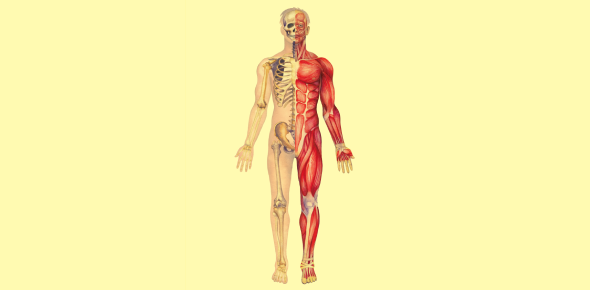Rhythmic waves of muscular contraction that occur in the walls of...
Which type of muscle is responsible for movement of the bones
Necrosis of heart muscle from ischemia is known as a "heart attack" or
Which type of cell plays a role in the body's defense against bacteria
Which type of joint is most mobile
Name the organelle that is responsible for cellular energy production
A diebetic patient who has unknowingly given himself too much insulin...
A lateral curve of the spine is a deviation known as
Endocrine glands located on top of the kidneys
The circulation of blood from the right ventricle through the...
Which artery should you be aware of when working in the cervical area
The most superficial abdominal muscle on the anterior surface of the...
Descending order of the small intestine
Part of the brain responsible for muscular coordination and balance
A bladder infection spreads upwards to the kidneys through which...
A substance such as a blood clot or bubble of gas that is carried by...
Which muscle is located on the posterior surface of the lower leg,...
Which of the following is a two joint muscle
A cord or sheet of connective tissue by which two or more bones are...
An excessive accumulation of fluid within the interstitial space is...
Artery located behind the knee supplying blood to the knee joint and...
The most superficial layer of meninges composed primarily of tough,...
Transmits nerve impulses from the brain to muscle
Which point of muscle attachment is considered most movable
Phase of the cardiac cycle during which a heart chamber wall is...
Nerve bundel, which passes between the anterior and middle scalene...
Inversion of teh foot by the tibialis anterior turns the sole
Increasing the angle of a joint is
The functional unit of the kidney for urine production
The origin of the short head of the biceps brachii is
Mineral required to facilitate the attraction of actin and myosin...
Vitamin D is synthesized in the
Structure which initiates stretch reflex in muscle causing contraction
This joint permits biaxial movements and exists only between the...
The longest vein in the body originating on trhe medial aspect of the...
Avascular tissue with very little intercellular matrix specializing in...
The most superficial muscle of the back is
The insertion of the SCM is
Quadrant of the abdomen in which the liver is located
The action of the teres minor is
The most abundant tissue in the body is
Hypertonicity of this muscle can put undue pressure on the sciatic...
Stimulation of the parasympathetic nervous system causes
Valve located between the left atrium and left ventricle which is...
Insulin is secreted by
The rotator cuff is found at which joint of the body
Which is an example of the sesamoid bone
Non movable type of joint is
Brachialis is the strongest flexor of the
The quadriceps muscle that attaches to the anterior inferior iliac...
Transports deoxygenated blood from the right ventricle into the lungs...
Where do the flexors of the wrist originate
The motion that can occur between the occiput and the atlas is
Medial and lateral bony projections located at the distal end of the...
Proprioceptor, which when stimulated by tension, causes lengthening of...
Which channel begins at a point on the perineum, ascends the midline...
Which is not a fuction of the liver
Muscular contraction in which the muscle shortens
The only bone to bone attachment between the lower appendicular...
Which muscle is associated with supination of the forearm
In TCM theory, the anterior surface of the human body is considered to...
Serous membrane covering the surface of the organs found in the body...
Also called the master gland
In TCM theory, which element is most associated with the stomach...
With which organs (channels) is the season of summer associated
Part of the brain controlling the "vital functions"
The gluteal muscle that attaches to the Iliotibial tract is the
Lymph collected from the majority of the body is routed to the left...
The origin of the femoral nerve is
Which is not normally reabsorbed by the kidney tubules
Slightly moveable joints connected by discs of cartilage are known as
Which of the following muscles acts with the piriformis to externally...
The three muscles that attach to the coracoid process are
This vessel arises from the aorta and delivers oxygenated blood to the...
Which represents the normal amount of cervical rotation
Thy pyloric valve is located between
Which of the following muscles might need to be considered in...
This muscle is responsible for stabilizing the scapula against the...
When working on a client with upper back and cervical problems, you...
Which of the five elements is associated with the sound of laughing
The cardiac sphincter is found at the distal end of the
Name of tissue covering the articular surface of bones
Which of the following channels is considered to be the "confluence"...
Which is the longest channel of the body, is associated with the water...
Which channel begins at a point on the radial side of the index...
Muscle contraction allowing for good posture is
Through which channel does chi flow during the time period of 3am to...
With which organs (channels) is the element of wood associated
With your client supine on the table, where does the stomach channel...
During what kind of exercise does teh tone of the muscle increase...
















